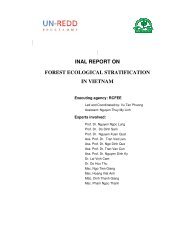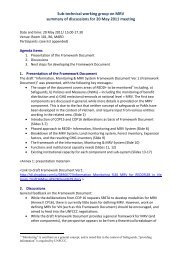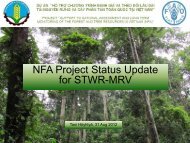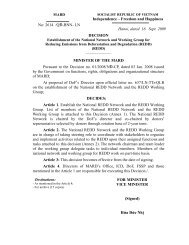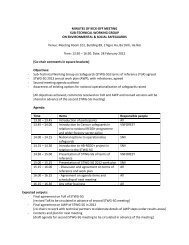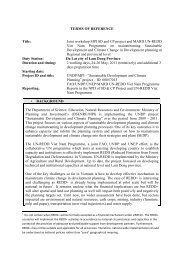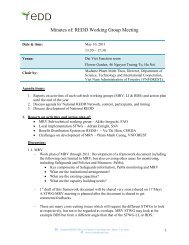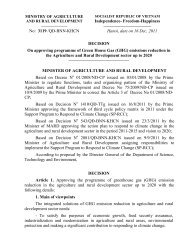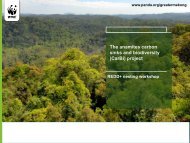FGM Workshop Background Paper - REDD - VietNam
FGM Workshop Background Paper - REDD - VietNam
FGM Workshop Background Paper - REDD - VietNam
You also want an ePaper? Increase the reach of your titles
YUMPU automatically turns print PDFs into web optimized ePapers that Google loves.
management boards 4,318,492 ha (33%), state enterprises 2,044,252 ha (15%),<br />
households 3,287,070 ha (25%), people committees 2,422,485 ha (18%), other<br />
organizations 659,935 ha (5%), military forces 243,689 ha (2%), communities<br />
191.383 ha (1%), other economical organizations 91,537 ha (1%).<br />
ISSUES TO BE ADDRESSED:<br />
• Available legal documents do not explain clearly legal terms such as “forest<br />
allocation”, “forest allocation by contract”, “forest rental”, which results in<br />
inadequate perceptions and implementation of forest policies, particularly<br />
between forest allocation and forest allocation for rental.<br />
• Lack of specific regulations on classification for which kind of special-use<br />
forests, protection forests, production forests can be allocated for rental,<br />
which results in the fact that most of land allocated to local people is bare land<br />
or poor natural forests. Medium and rich natural forests remain managed by<br />
state companies.<br />
• Legal content on natural forest use and beneficiary rights have not been<br />
transparently explained and regulated in legal documents, particularly the<br />
relation between the government - as natural forest owner and forest<br />
managers - as bodies authorized by the government to use the forests<br />
through allocation and forest rental.<br />
• Forest Protection and Development Law 2004 (Article 29, 30) defines that<br />
forest allocated to local communities by the Government is for common<br />
benefits of the communities regardless of forest types as special-use,<br />
protection or production forests. However, the Land Law does not define land<br />
allocation to local communities; Decree No. 181/2004/NĐ-CP on guidelines to<br />
perform Land Law at Article 72 stimulating that only protection forests would<br />
be distributed to local communities.<br />
• According to the Land Law, forest enterprises are entitle to receive forest<br />
rental or allocation with land use charge, but no legal document is available to<br />
define specific price of forest rental charge.<br />
• Slow allocation of land and forests. By 2009, only about 70% of forest land<br />
has been distributed to different managers. The area allocation to communes’<br />
People’ Committees reaches more than 2.4 million ha (accounting for 18% of<br />
the total national forest area in use), without clear responsibilities.<br />
• Land allocation and forest allocation do not link together closely (there is no<br />
close collaboration between Agriculture and Rural Development Sector and<br />
Natural Resources and Envrionemnt Sector).<br />
• Forests allocated to households and communities are mainly with low<br />
standing-tree stock with small and scattered area and bad transportation<br />
conditions. Therefore, they are not accurate to run a good business.<br />
• Fee of masurement, recording, and issuing land use certificate (Red Book) is<br />
high while government budget allocated to this item is limited.<br />
• The unclear demarcation in the field has created more difficulties to<br />
management leading to difficulties in dealing with illegal forest land use<br />
transformation, which results in overlapped land allocation and conflicts<br />
among forest owners.<br />
29




